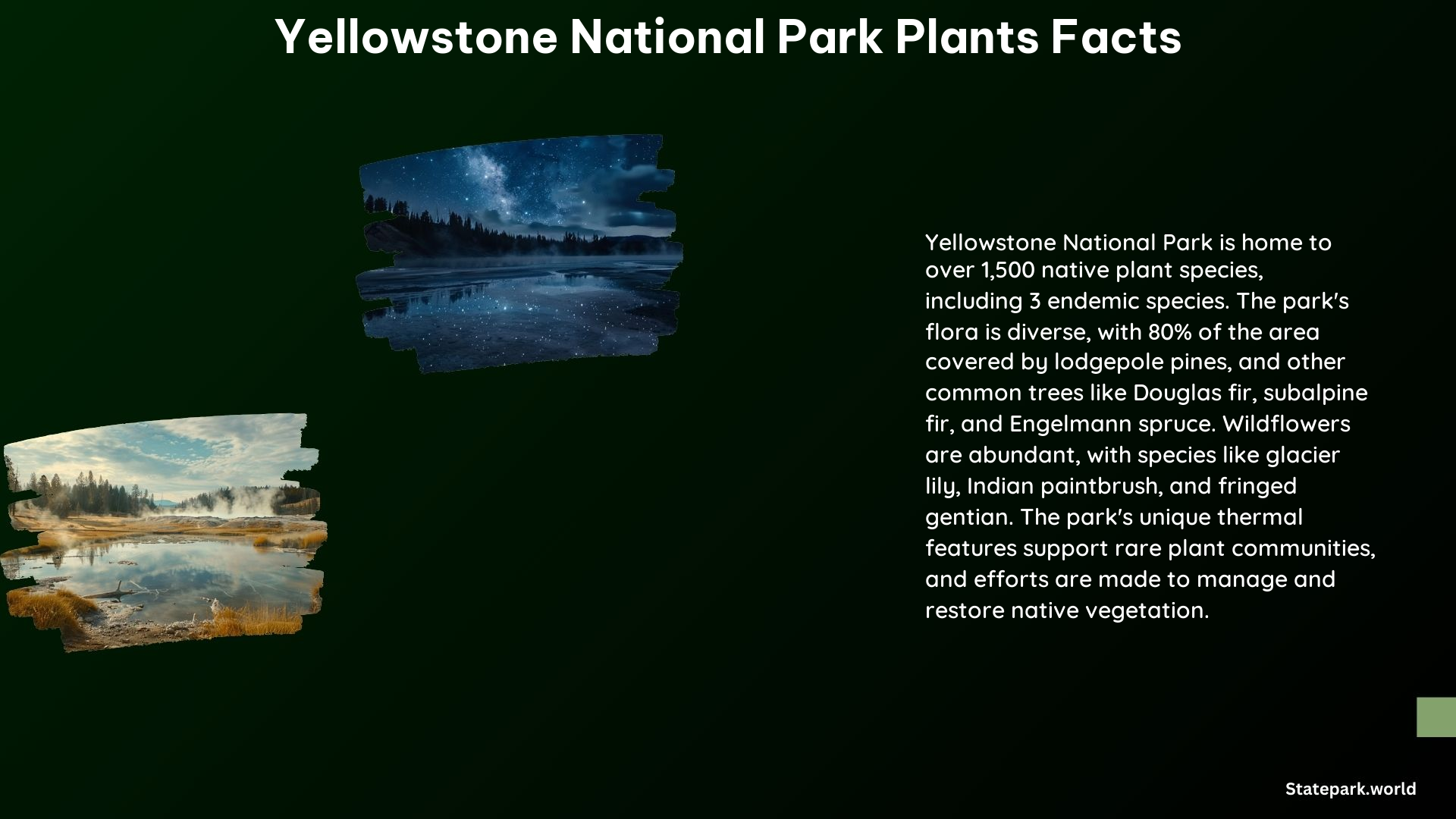Yellowstone National Park is home to a diverse range of plant species, with over 1,500 native plant varieties in the Greater Yellowstone ecosystem. From endemic species to unique vegetation communities, the park’s flora is a fascinating aspect of this natural wonder.
Three Endemic Plant Species in Yellowstone National Park
- Ross’s Bentgrass: This grass species is found only in the geyser basins in the Firehole River drainage and at Shoshone Geyser Basin.
- Yellowstone Sand Verbena: This plant occurs along the shore of Yellowstone Lake.
- Yellowstone Sulphur Flower: This flower is found only in the Firehole River drainage.
Vegetation Communities in Yellowstone National Park

- Forests: Covering about 80% of the park, lodgepole pine is the most common tree species, accounting for more than 80% of the total forested area.
- Sagebrush-Steppe: This vegetation community is found in the northern range of the park.
- Wetlands: Yellowstone’s wetlands include lakes, rivers, ponds, streams, seeps, marshes, fens, wet meadows, forested wetlands, and hydrothermal pools.
- Hydrothermal Plant Communities: Unique plant communities have developed in thermally heated ground.
Iconic Wildflowers of Yellowstone National Park
- Glacier Lily: A bright yellow spring flower found in abundance at elevations above 7,500 feet.
- Indian Paintbrush: The Wyoming state flower, characterized by its bright scarlet bloom.
- Fringed Gentian: The official flower of Yellowstone Park, with purple petals fused into a 2-inch-long corolla.
- Silky Phacelia: Known for its silvery pubescence on stems and leaves, often photographed in July and August.
Management Challenges for Yellowstone’s Plants
- Controlling Nonnative Species: Invasive plants threaten native species, especially near developed areas.
- Monitoring Whitebark Pine: This important native species is in decline.
- Restoring Native Vegetation: Park managers are working to restore areas of disturbance to native plant communities.
Other Notable Plants in Yellowstone National Park
- Quaking Aspen: Known for its leaves that regularly grow in dense, pure stands, creating a stunning golden vista in the fall.
- Arrowleaf Balsamroot: Used as food by various Native American groups.
- Paintbrush: Found in open areas and along roadsides.
Yellowstone National Park’s plant life is a testament to the park’s ecological diversity and the ongoing efforts to preserve its natural beauty. From the endemic species to the iconic wildflowers, the park’s flora is a must-see for any nature enthusiast visiting this iconic American landscape.
References:
– National Park Service. (2023). Resources & Issues Chapter 6 Vegetation. Retrieved from https://www.nps.gov/yell/learn/upload/6_RI_2023_Vegetation_508web.pdf
– National Park Service. (2021). Wildflowers. Retrieved from https://www.nps.gov/yell/learn/nature/wildflowers.htm
– Yellowstone National Park Lodges. (2024). The Incredible Flora and Fauna of Yellowstone. Retrieved from https://www.yellowstonenationalparklodges.com/connect/yellowstone-hot-spot/infographic-spot-these-plants-and-animals-in-yellowstone-national-park/
– National Park Service. (2021). Plants. Retrieved from https://www.nps.gov/yell/learn/nature/plants.htm
– Frommer’s Travel Guides. (n.d.). The Flora in Yellowstone National Park. Retrieved from https://www.frommers.com/destinations/yellowstone-national-park/a-nature-guide/the-flora
